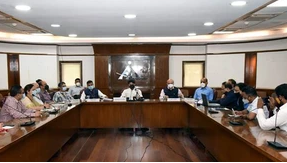Discover how the integration of drones in oil and gas industry operations revolutionizes efficiency and safety. Learn about the key applications, benefits, and regulatory considerations in this comprehensive guide with AEROGO.
In recent years, the oil and gas industry has witnessed a technological revolution with the incorporation of drones into its operations. These unmanned aerial vehicles (UAVs) offer numerous advantages, ranging from enhanced data collection to improved safety measures. In this blog post, we delve into the extensive use of drones in the oil and gas industry, exploring their applications, benefits, and the regulatory landscape governing their implementation.
1. Applications of Drones in the Oil and Gas Industry
Drones have revolutionized traditional workflows in the oil and gas sector, unlocking new possibilities for increased efficiency and cost-effectiveness. Here are some key applications where drones are making a significant impact:
1.1. Asset Inspections: Drones equipped with advanced high-resolution cameras and sensors are invaluable for conducting remote inspections of oil rigs, pipelines, and critical infrastructure. They provide detailed visual data and perform thermal imaging, enabling the detection of potential issues such as leaks, corrosion, or structural damage without the need for human intervention. This not only saves time and resources but also enhances safety by reducing the need for personnel to physically access hazardous or hard-to-reach areas.
1.2. Environmental Monitoring: Drones play a vital role in monitoring and assessing environmental conditions in oil and gas exploration areas. Equipped with specialized sensors, they can collect valuable data on air quality, water pollution, and wildlife monitoring. This data aids in sustainable resource management and supports efforts to minimize the industry's environmental footprint. By providing accurate and real-time information, drones contribute to better decision-making processes and ensure compliance with environmental regulations.
1.3. Emergency Response: Drones offer rapid response capabilities during emergencies, such as oil spills or natural disasters. With their ability to swiftly navigate affected areas, drones provide invaluable support in assessing the extent of the damage. They capture high-resolution imagery and video, enabling emergency response teams to make informed decisions and allocate resources effectively. By facilitating quick and efficient disaster response efforts, drones contribute to minimizing environmental impact and enhancing overall safety.
By harnessing the power of drones, the oil and gas industry can optimize operations, improve safety standards, and streamline resource management. These applications highlight the immense value that drones bring to the industry, allowing for proactive maintenance, accurate data collection, and timely response to emergencies. As technology continues to advance, we can expect even greater integration of drones in the oil and gas sector, further enhancing efficiency and sustainability.
2: Benefits of Drone Integration in the Oil and Gas Industry
The integration of drones into oil and gas industry operations brings forth a multitude of benefits. Here are some notable advantages that drone technology offers:
2.1. Enhanced Safety: By reducing the reliance on human workers to perform high-risk tasks, drones contribute to a significant improvement in safety standards. They can access hard-to-reach or hazardous areas, such as tall structures or remote locations, without exposing human personnel to potential dangers. This not only minimizes the risk of accidents and injuries but also ensures the well-being of workers by keeping them out of harm's way.
2.2. Cost and Time Efficiency: Drones enable swift and efficient data collection and analysis, eliminating the need for manual inspections that are often time-consuming and resource-intensive. By autonomously surveying vast areas, drones significantly reduce the time required to gather essential data. The real-time or near-real-time data acquisition allows for quicker decision-making processes and prompt response to any identified issues. Moreover, the reduction in human labor and equipment requirements translates into substantial cost savings for oil and gas companies.
2.3. Data-driven Insights: Equipped with advanced sensors, cameras, and imaging capabilities, drones capture accurate and detailed data that can be utilized for various purposes. This data-driven approach provides valuable insights for asset management, predictive maintenance, and optimization of operational processes. By continuously monitoring infrastructure and equipment, drones enable early detection of anomalies, facilitating proactive maintenance and reducing downtime. The ability to analyze vast amounts of collected data aids in identifying patterns, improving overall efficiency, and optimizing resource allocation.
The integration of drones in the oil and gas industry brings about enhanced safety measures, significant cost and time savings, and data-driven insights that drive operational efficiency. By leveraging these benefits, companies can streamline their processes, mitigate risks, and improve overall productivity. The continued advancements in drone technology hold immense potential for further optimizing operations and unlocking new opportunities in the oil and gas sector.
3: Regulatory Considerations and Future Outlook of Drone
The use of drones in the oil and gas industry is accompanied by regulatory considerations that aim to ensure safety, privacy, and compliance. Here are some key aspects to consider:
3.1. Regulatory Compliance: Drone operations in the oil and gas sector are subject to regulations imposed by aviation authorities and governing bodies. These regulations govern aspects such as airspace restrictions, licensing requirements, and flight operations. Companies must stay updated with the latest regulations and obtain the necessary permits and certifications to operate drones legally and safely.
3.2. Data Privacy and Security: As drones collect and transmit data, including sensitive information, companies must prioritize data privacy and security. Compliance with data protection regulations and implementing robust cybersecurity measures are essential to safeguarding the data collected by drones. This includes encryption of data, secure storage practices, and strict access controls to protect against unauthorized use or breaches.
3.3. Future Outlook: The future of drones in the oil and gas industry is promising, with advancements in technology driving further innovation and expanded applications. Continued improvements in flight duration and payload capacity will enhance the capabilities of drones, enabling longer and more efficient operations. Moreover, the integration of artificial intelligence and machine learning algorithms will enable real-time data analysis, predictive maintenance, and more sophisticated automation. These developments will contribute to increased operational efficiency, cost savings, and improved decision-making processes within the industry.
As the drone technology landscape continues to evolve, it is crucial for companies in the oil and gas sector to stay abreast of regulatory changes and embrace technological advancements. By doing so, they can ensure compliance, unlock new opportunities, and leverage the full potential of drones to optimize their operations and drive sustainable growth.
Conclusion
The use of drones in oil and gas industry operations has brought about a paradigm shift in terms of efficiency, safety, and data-driven decision-making. By leveraging the capabilities of drones, companies in the sector can optimize asset management, reduce costs, and enhance worker safety. However, compliance with regulatory frameworks remains crucial to ensure responsible and secure drone operations. As technology continues to evolve, the oil and gas industry can harness the full potential of drones to unlock new levels of efficiency and productivity with AEROGO.
Let's, Read more from interesting Blogs by AEROGO INDIA Now!
















Comments